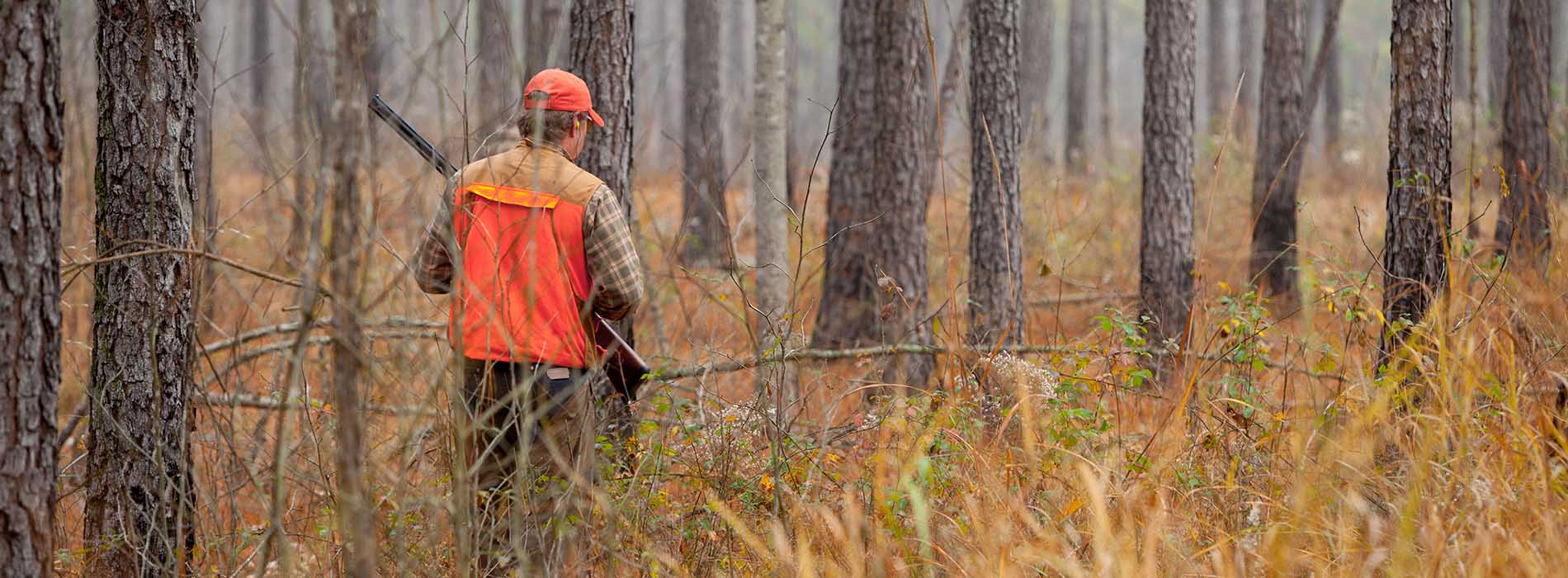In 1993, Raymond Woolfe, a friend of mine, asked me to help him with the design and engineering of a steeplechase course and restoration of flat track, located on a 5,000-acre farm in rural Nelson County, Virginia. Raymond is an accomplished steeplechase course designer having laid out in the field numerous courses across the country.
We started talking about rural land and how much of it was being developed in a manner not particularly sympathetic to the environment. This discussion led to another centering on family farms and ranches and the fact that many owners could not sustain their land through traditional farming of crops or livestock. We asked ourselves, “If landowners wish to retain the inherent benefits of a country lifestyle and are reluctant to develop conventionally, then what could they do to generate income while maintaining the land for family use?”
Raymond and I discussed numerous solutions. Eventually, we hit on introducing fee-based outdoor recreational venues and activities, namely heritage sports such as shooting, hunting, fishing, equine sports and falconry. Hence, Field Sport Concepts, Ltd. was born.
My company McKee Carson’s main focus is providing land planning, landscape architectural and civil engineering service. For this idea to come to fruition, we needed a corps of experts who specialized in a host of disciplines such as wildlife habitat restoration and sporting related disciplines. Rather than employ all these people, we formed a consortium of known specialists around the country. For geographic specific services such as geotechnical, forestry, and agronomy, we planned to engage local professionals who knew the territory.
The Fork: A Multiple Activity Field Sport Venue
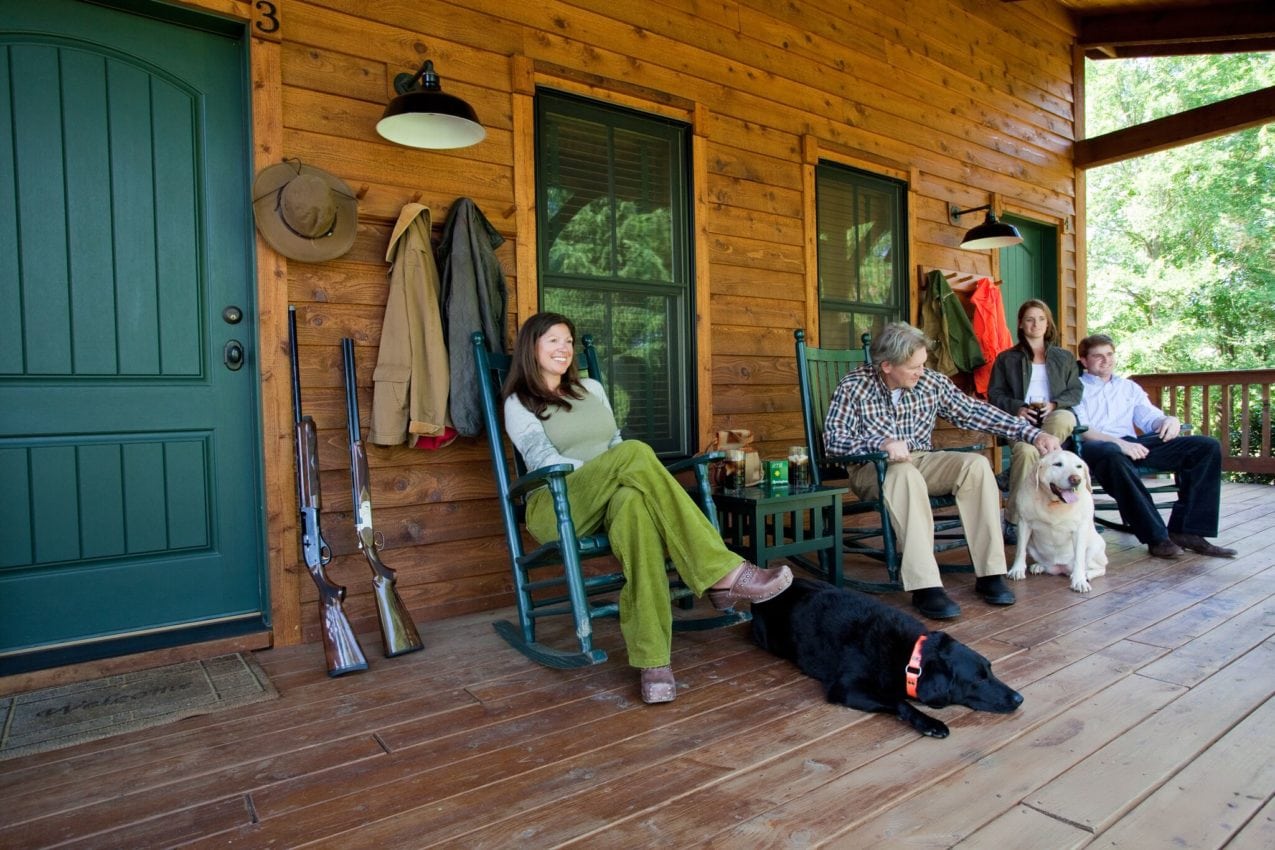
The 1,100-acre Fork Farm is located at the confluence of two rivers in south-central North Carolina. Field Sport Concepts worked with our client to create a private agricultural, equestrian and hunting preserve that was both sensitive to the environment and sympathetic to the site’s historical and cultural resources. Included in the program are sporting clay courses designed by Field Sport Concepts affiliate John Higgins, a horse-breeding program, CTA-caliber eventing venues, continued agricultural use, extensive wildlife habitat and husbandry efforts for dove, duck, quail, pheasant, turkey and deer, and a variety of architectural components reflecting rural traditions.
Site analyses, conceptual design studies, soil tests, and habitat and wildlife population research converged in a charge to determine the potential of the subject site to lend itself to a well-orchestrated establishment of the envisioned programs. The collaborative efforts of our diverse planning team consisting of McKee Carson, Dr. Peter Bromley of North Carolina State University, Ken Knight of the NC Wildlife Resources Commission, Jay Logsdon of the South Carolina Waterfowl Association, Bill Sullivan of the Geoscience Group produced a comprehensive feasibility study which identified the effects of various site conditions on each individual program and their relationship to one another.
The final product re-established the historical context of a “gentleman’s farm” upon which agricultural and rural recreational pursuits are realized. In the end, the property serves as an example of how land can be used in an environmentally sensitive and culturally sympathetic way. Although portions of the site will be maintained as a commercial farming operation, the entire property is managed in a manner founded on stewardship for the land creating a largely sustainable farm by combining the best of current technology with good old-fashioned common sense.
From an environmental perspective, by taking an historic rather than conventional approach to agriculture, well-orchestrated practices will create critical habitat-diversity, thereby making the land capable of sustaining a wide variety of healthy wildlife populations.
Little Mountain Ranch: A Family Retreat
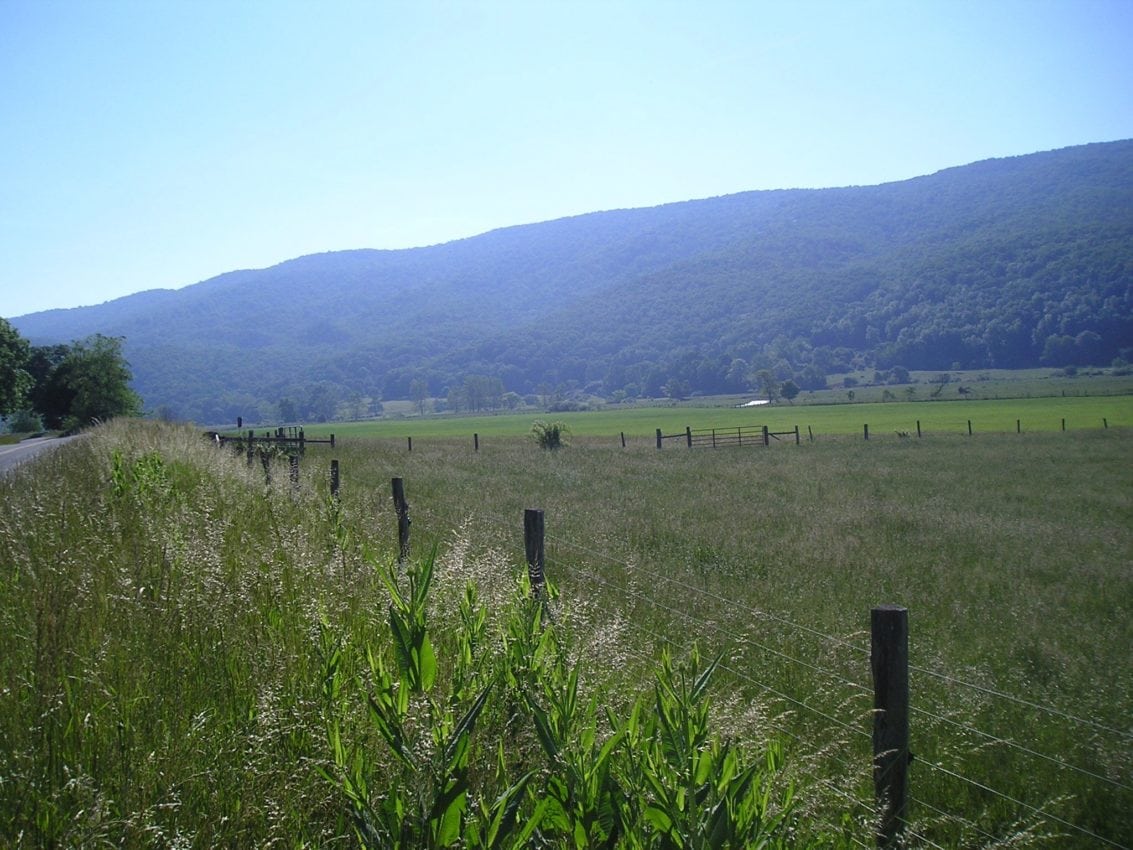
In the foothills of the Alleghenies in Highland County, Virginia, Little Mountain Ranch is 1,800 acres of diverse topography with open fields, wooded areas and tributaries of the Jackson River running throughout. McKee Carson worked with the owner to plan a multi-functional retreat, a place of respite and recreation designed to meet the needs of a growing family. The resulting master plan employs conservation easements, enhances ecologically sensitive areas, and introduces new rural recreational pursuits.
The master planning process began with a comprehensive analysis of the site’s geographic, cultural, and historical context including the chronicling of resource maps and narratives of Highland County along with site analyses conducted on local ecology, plant communities, terrain and solar aspect. Along with this program, we prepared “hypothetical” development plans and associated construction cost analyses used to appraise the value needed for placing the property under conservation easement now held by the Virginia Outdoors Foundation. In order to revive the ranch’s trout habitat, Field Sport Concepts affiliate Trout Headwaters, Inc. participated in the evaluation of riparian and river restoration efforts for a mile stretch of river within the property.
With very few exceptions, the land, as a resource, lends itself well to the envisioned programmatic elements that will ultimately preserve the value and ensure the family’s enjoyment of the property. These include cabins and campsites, trails and trail destinations, ponds, wildlife habitat and husbandry, agriculture and timber as well as the subdivision of the property solely for estate planning purposes and for the ultimate creation of home sites for family members. As illustrated in this program, the conservation easement will preserve the site’s ecology.
Sagamore Farm: An Equestrian Facility
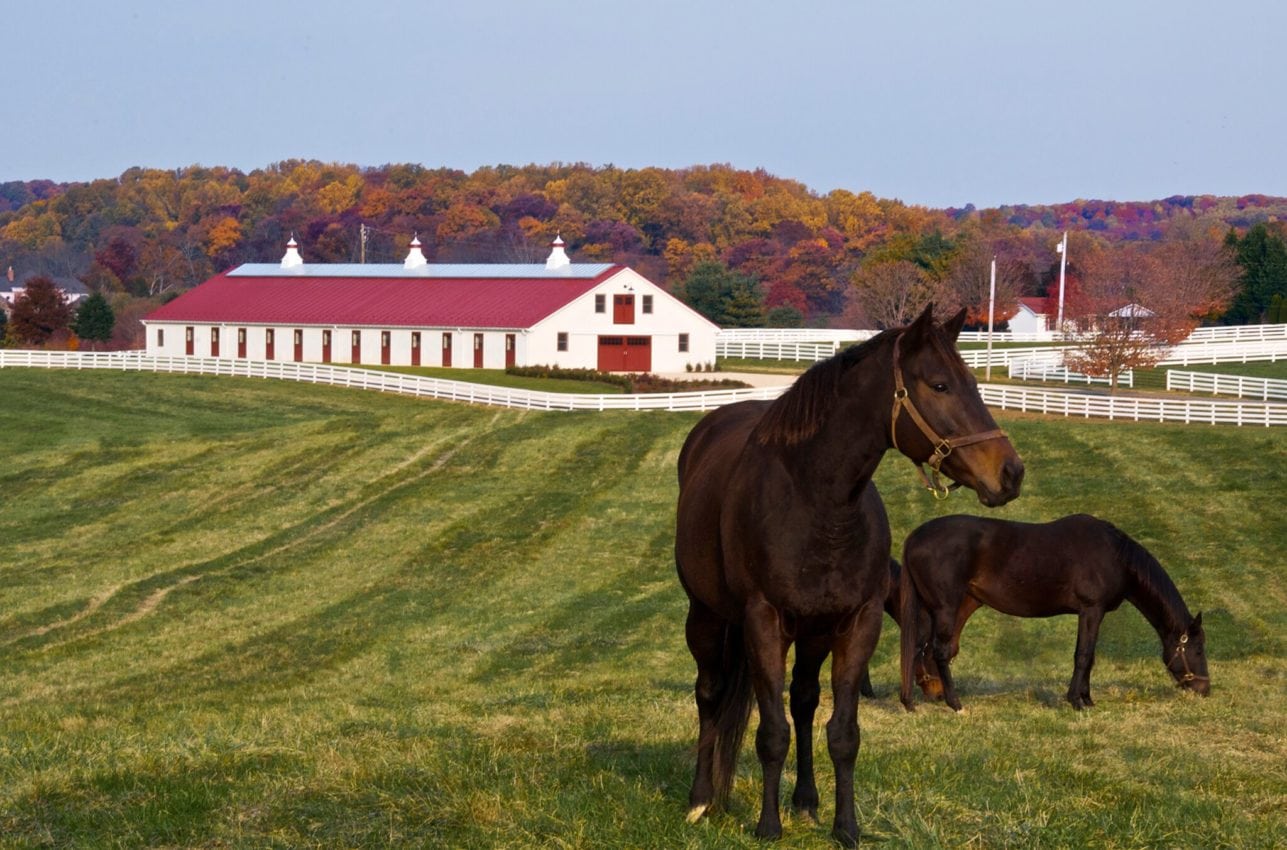
Near the outskirts of Baltimore, Maryland lies a legendary equine sanctuary, Sagamore Farm. Originally owned by Alfred G. Vanderbilt and once home to Native Dancer, considered one of the greatest race horses of all time, Sagamore has held international recognition as a premier breeding and training ground in the thoroughbred industry, but it was in need of renewal and revitalization. When outlining his vision for the farm, the current owner was very clear about his plans for restoring the property to its former status, saying simply, “We are looking for winners, period. That’s our only goal.”
Affiliates Blackburn Architects, a renowned equine architectural firm, and McKee Carson provided project direction and site design services for the restoration and renovation to meet the needs of a modern equine facility with a careful eye and a measured respect for the farm’s history. Along with providing architectural services for the renovation of two existing barns including a 16-stall foaling barn and a 20-stall broodmare barn, the affiliates also provided site design services. These included the redesign of the gates and entrances and several places on the 250-acre farm.
Bundoran Farm: A Conservation Community
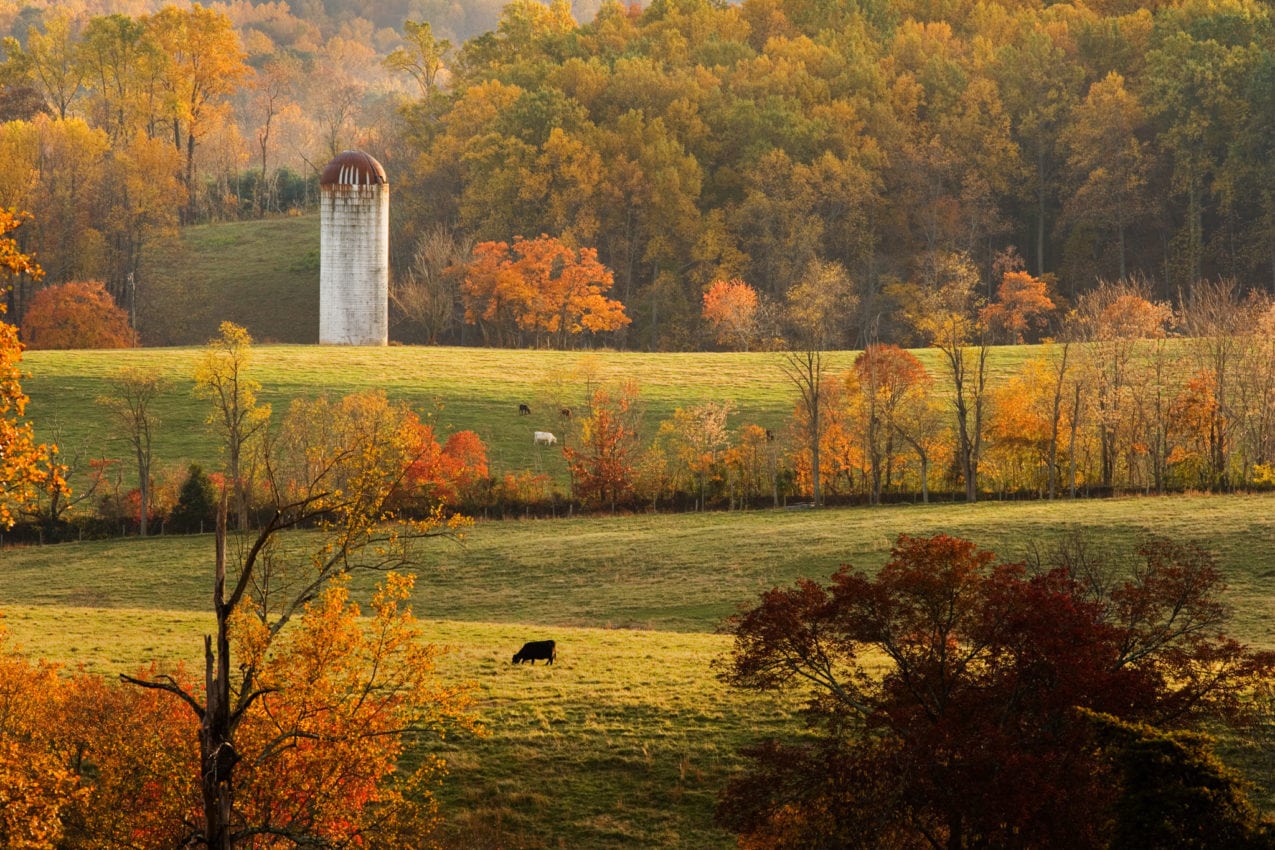
Located 20 minutes south of Charlottesville, Virginia, 2,300 acres of pasture, orchards, and woodlands comprise a place that is both breathtaking in its natural beauty and classically Piedmont. Unique in both concept and execution, Bundoran Farm is now a rural community that combines farmland and forest preservation with limited residential development. Fee simple property owners allow restricted easements and protective overlays on their property. In exchange, the farm protects and maintains large contiguous areas for pasture, recreation and forestry, guaranteeing the future preservation of the farm’s character and function. Thus, property owners protect their investment and gain access to the larger maintained property.
The farm’s landscape is varied, but in many ways typical of rural Albemarle. Roughly half of the farm is wooded and a good example of well-managed mature Piedmont hardwood forests. Orchards bearing red and golden delicious apples cover approximately 200 acres. The remainder, roughly 1,100 acres, is fenced, well-watered pastures of orchard grass and fescue, and includes a cow-calf operation. The farm is also home to two estates, nine rental cottages, and numerous agricultural shops, barns, and other outbuildings.
Very limited harvesting, as well as localized timber stand improvement and, more recently, aggressive invasive eradication work in conjunction with the Virginia Department of Forestry have resulted in large areas of exemplary mature forest. The thousand or so acres of hardwood forest include valuable habitat, as do the large grassland areas of the pastures.
The property hosts an active hunt club, implementing a state-directed deer management assistance program (DMAP), a site-specific program that increases a landowner’s or hunt club’s management options for control of deer populations. The team is committed to continuing the DMAP program in perpetuity.
At the heart of the vision for Bundoran Farm is the idea of the “Working Landscape.” It is one of the key elements that distinguishes Preservation Development from other real estate developments, even those that place lands in conservation or preservation covenants. Bundoran Farm is a working industry whose base of operations is the topsoil. This is not an approximation of living on a golf course or beside a national park. The land has been and will continue to be manipulated, worked, and managed. As such, it is not “natural” in the romantic sense of the word, which is to say it is not pristine. These lands are and will remain, however, earthy, beautiful, meaningful, and deeply rooted not only in nature but also in millennia of human activity.
Working with the developers and Audubon International, McKee Carson prepared the master plan and designed the roads to combine private residential land use alongside agricultural sustainability.
Jackson River Sporting Club
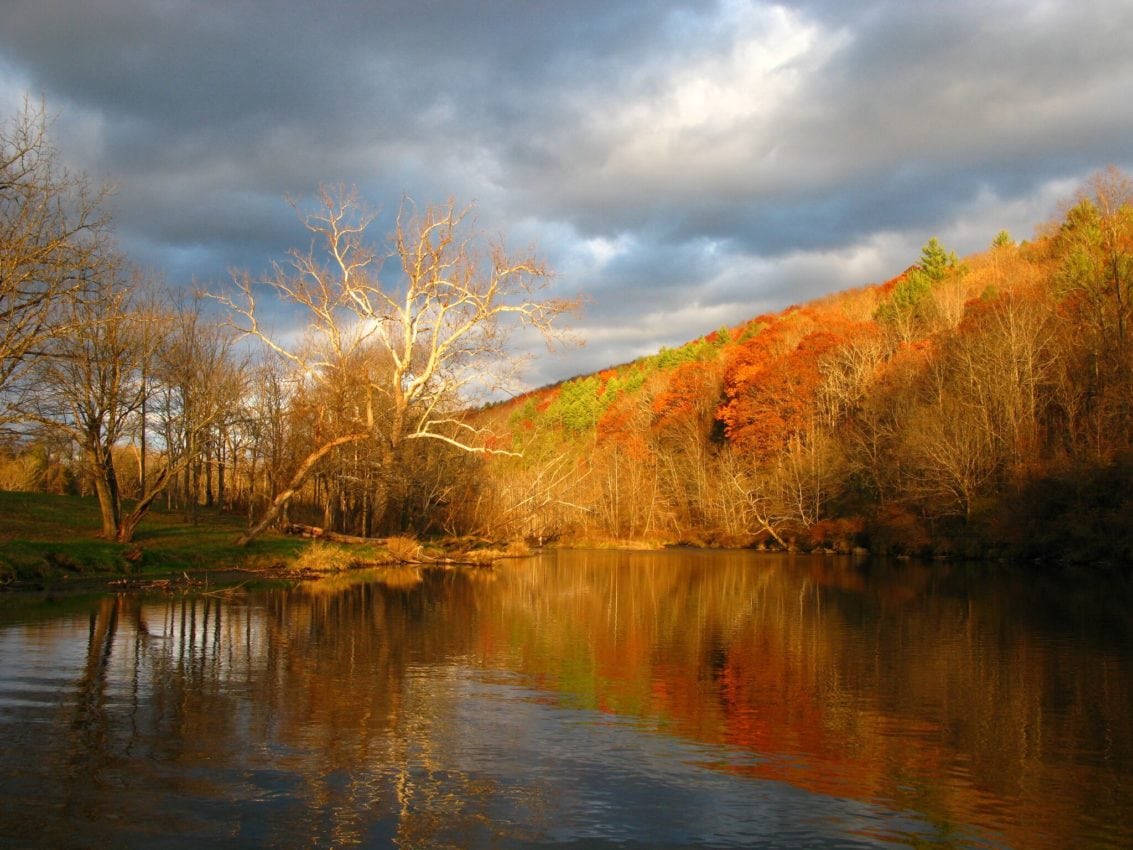
Flowing from its headwaters in Highland County to where it meets the Cowpasture River to form the James, the Jackson River is one of the most pristine, scenic and in some stretches, unfished rivers on the east coast.
Conveniently located just 10 miles from the Homestead Resort, this picturesque property is an outdoorsmen’s dream. Abundant wildlife including deer, bear, grouse and turkey flourish in and around its 750 acres which adjoin several thousand acres of the George Washington National Forest, a protected natural environment. The river and regional climate provide an excellent habitat for wild rainbow and brown trout to thrive. The upper tailwater section of the Jackson averages 285 CFS and 58⁰ F, creating a unique western fly fishing experience. Anglers can expect quality dry fly fishing during the spring, summer, and fall hatches as well as excellent nymph fishing year round.
The Jackson River’s limestone formations and spontaneous springs provide habitats for smallmouth and rock bass [redeye] and rainbow and brown trout [both wild and stocked], and redbreast sunfish. Many attest that these fish are the fiercest fighters, pound-for-pound in freshwater. The freshwater invertebrates are numerous and hatches are prolific, thanks in part to the many springs that empty into the river. These springs keep the river filled and cool, making it eminently fishable throughout the hot summer days.
Working with the owner, McKee Carson designed a master plan along almost two miles of the Jackson River which includes a mix of upland hardwood forest, with stands of mixed oak and hickory trees together with tulip poplars and lowland meadows. Utilizing conservation methodology sensitive to all aspects of the property, McKee Carson located homesites considering viewsheds, solar orientation, terrain and forest-field-river accessibility. Each homesite accesses the blue-ribbon waters of the Jackson River. Natural systems inventories were also taken to assure the proposed interventions were ‘laying lightly on the land.’
OUR COMMITMENT
Employing a team approach, Field Sport Concepts, Ltd. draws upon our experts with a wide range of knowledge in the area of planning and profitable management of open lands. The company is structured to provide comprehensive planning, design, construction supervision, and program implementation and management services for a full range of field sport activities, special events and related amenities.
As Trout Headwaters, Inc. (THI) founder and President Mike Sprague said “We are excited to be working with such a great group of concerned land-use professionals. Like the other Field Sport Concepts affiliates, THI has always strived to offer clients a wide range of solutions for the preservation, enjoyment, and continued economic viability of their property. We just love the concept of Field Sport Concepts.”
At Field Sport Concepts, Ltd. we have made environmental conservation through sensitive land planning our vocation. By unifying creative ability with a common sense approach, we can help you realize your visions for the future of your land. Our commitment coupled with your participation can ensure the preservation of your farm or estate for generations to come. To learn more about our company, please visit our website at www.fieldsport.com.
Robert McKee is a licensed professional engineer and registered landscape architect. He is the President of McKee Carson, a land planning, landscape architecture and civil engineering firm based in Charlottesville, Virginia and is the Founding Principal of Field Sport Concepts, Ltd. with offices in Charlottesville and Austin, Texas. He can be reached by email at: rmckee@fieldsport.com.
